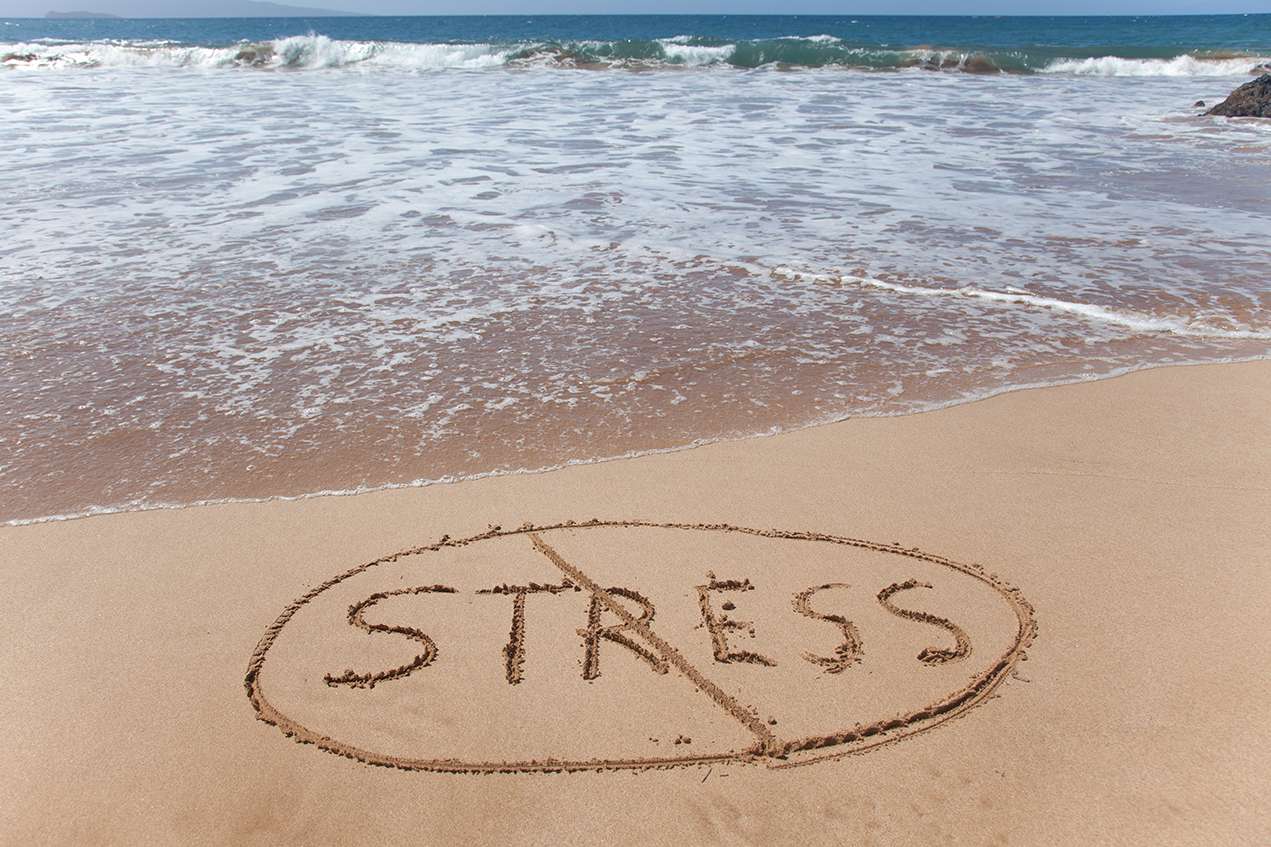My heart is pounding. I’m achy. I’m exhausted. My thoughts are completely scattered, much like the files and coffee cups on my desk.
“You need to relax, work stress is perfectly normal,” is what others would tell me. Most people look forward to the end of the work day so they can go home and relax. I, on the other hand, dread it. All I can think about is the never ending to-do list waiting for me at home.
Why can’t I seem to manage the things that everyone else seems to find so simple? I feel like I am barely able to keep my head above water while everyone else is swimming past me. How am I supposed to balance it all? How will I get through the rest of the day?
Let’s set the facts straight!
It comes as no surprise that we all experience stress at some point in our lives. In fact, 73% of all working adults between the ages of 20-64 report some level of stress. Furthermore, 1 in 4 Canadians report stress as the reason for leaving their jobs (Statistics Canada).
Stress is systemic; we all experience it in our daily lives. What differentiates good stress (eustress) and bad stress (distress) is how we choose to think about it, feel it and respond to it. When we harness stress for the good, it energizes us, it nurtures positivity and it can help us develop great coping mechanisms. When we don’t combat bad stress, it beats us down to our core, and significantly impacts our ability to complete seemingly simple tasks.
How can Occupational Therapists help manage my stress?
Occupational therapists help to solve the problems that interfere with our ability to do the things that are important to us – everyday things like:
- Self-care (eating, personal hygiene, getting dressed)
- Being productive (going to work, grocery shopping, paying the bills)
- Leisure activities (sports, gardening, social activities)
Stress has no boundaries. When stress gets the best of us, it can impact all areas of function. And this is where Occupational Therapists come in. We are trained to help support people to regain function in the various areas of life.
The Canadian Association of Occupational Therapy upholds that occupational performance is the result of the dynamic interaction between the person, environment and the occupation – when one changes, everything else is affected and performance changes. Occupational Therapy is unique in that it take a holistic approach to health and wellness. When an Occupational Therapist sees an individual suffering from chronic stress, they don’t just look at individual factors, rather, they look at the interaction between the person, their environments and their occupations.
Here are just 10 of the ways Occupational Therapy can help manage stress:
1. Support with developing behavioural adaptations.
2. Intervene with mindfulness-based, stress-reduction techniques.
3. Provide training of energy conservation for those experiencing chronic fatigue.
4. Provide strategies and exercises for chronic pain management.
5. Cognitive restructuring to reduce reflection on negative thoughts.
6. Help identify strategies that distract or self-soothe an individual when they are feeling stress symptoms.
7. Provide recommendations for environmental modifications.
8. Facilitate and assist with return-to-work planning.
9. Develop a work-hardening program to minimize the risk of relapse.
10. Functional and cognitive job coaching to provide strategies in real life situations.
Want to Learn More about the role of Occupational Therapy in managing stress in the Workplace?
PSHSA is hosting a webinar on Sensory Processing and Management of Chronic Stress in the Workplace on Thursday, December 19, 2019 from 12:00-1:00 pm. In this webinar we will discuss the sensory system, how to identify our own sensory needs and ways in which workers can identify stressors and take steps to better self-regulate sensory-related challenges.
Want to learn more about the role of Occupational Therapy in Occupational Health and Safety? We want to hear from YOU. Contact us by email at [email protected].
In its most basic definition, stress is our body’s response to a demand. With the introduction of the COVID-19 pandemic and all the protective measures put in place to try to wrangle it, there are plenty of new demands for people’s bodies to adjust to. Here are five strategies to help lower stress during this challenging time.
Gratitude journaling
Right now, it can be easy to focus on all we are missing out on due to the stay at home mandates. Identifying three things to be grateful for each day and writing these down can help us feel happier, allow us to better tackle stressors that we encounter during the day, and has even been shown to boost our immune functioning.
 Writing down a list of things one is grateful for helps to train the mind to acknowledge and focus on the positive, even in difficult situations. (Photo/Shutterstock)
Writing down a list of things one is grateful for helps to train the mind to acknowledge and focus on the positive, even in difficult situations. (Photo/Shutterstock)
Stretching — For many people, attending class, studying and participating in meetings may all be happening in the same workspace. Getting up and stretching periodically is not only good for managing aches and pains that can develop, but is a great way to alleviate muscle tension that can occur as a part of the stress response and provide proprioceptive input through our joints that can have a calming effect.
 Stretching not only helps to prevent injury, but can have a calming effect on the mind by releasing tension. (Photo/Shutterstock)
Stretching not only helps to prevent injury, but can have a calming effect on the mind by releasing tension. (Photo/Shutterstock)
Set Boundaries — There is an over-abundance of COVID-19 related news and media. While it’s important to stay informed, excessive consumption can contribute to increased fear and anxiety. Try limiting news intake to particular times of day or a few reputable sources, and then use the rest of your media consuming time to catch-up with loved ones, watch funny videos, and explore new and interesting topics.
Get Outside — Exposure to sunlight can increase Vitamin D production which is associated with reduced risk for depression and anxiety, and being in nature improves our mood and feelings of well-being. If you have access to safe outdoor space that you’re able to enjoy while socially distancing, consider incorporating an afternoon walk into your routine or sitting outside to read or study. If you aren’t able to physically go outside, spend time relaxing near a window or recalling your favorite outdoor setting — research shows that even imagining yourself in nature can have the same positive effects as being there!
 A back yard, an apartment courtyard, or a walk around the block can all serve as outdoor getaways as long as one practices social distancing and wears a mask in public. (Photo/Shutterstock)
A back yard, an apartment courtyard, or a walk around the block can all serve as outdoor getaways as long as one practices social distancing and wears a mask in public. (Photo/Shutterstock)
Breathe — When your body is in a stress response, breathing becomes quicker and shallower. To move your body into a more relaxed state, focus on breathing slowly and filling your lungs fully with air before exhaling. Putting a hand on your stomach or counting (e.g., inhaling for 4, holding for 2 and exhaling for 6) can provide helpful cues. The great thing about breathing as a stress management technique is you can use it anytime, such as during a test or before speaking in front of the class, without anyone knowing.
— Tracy Jalaba, OTD, OTR/L, of the USC Occupational Therapy Faculty Practice
What are some techniques to manage our stress and anxiety?
Stress management and relaxation techniques are important for your mental health toolbox. They can include quick and simple exercises that allow you to take a break during your day or refocus your energy when you begin to feel overwhelmed. They can also include more in-depth and focused exercises for more stressful or anxiety-producing situations. Taking the time to utilize these tools throughout your day can allow you to manage your stress in order to participate more fully in your everyday life.
Breathing Exercises: Quick and simple breathing exercises are important tools for individuals to utilize frequently. These are the easiest techniques for individuals to build into their day and use in any setting at any time. Remember to focus on each breath during your breathing exercises by visualizing the air as it enters and leaves your body.
- Pursed lip breathing:
- Inhale through your nose with your mouth closed.
- Exhale through tightly pressed lips.
- Square breathing:
- Inhale for a count of 4.
- Hold your breath for a count of 4.
- Exhale for a count of 4.
- Hold your breath for a count of 4.
Progressive Muscle Relaxation: Progressive muscle relaxation works to relax your mind and your body by tensing and then relaxing various muscle groups from your head to your toes. The goal is to feel your muscles relax, slowly releasing the tension in your body. Following a stroke, you may not be able to actively tense certain muscle groups, so you may visualize the muscle tensing and relaxing instead.
Guided Imagery: Guided imagery is a relaxation technique that involves listening to a tape or using your own imagination to visualize a peaceful and positive environment. It can help distract you from the stressors you are experiencing or get into a more positive mindset. Either way, guided imagery can give your mind and body a break from the effects of stress.
- Visualize a quiet, relaxing place of your choice (the beach, a dock, a mountaintop, your backyard) while listening to soft music.
Use your Senses: Stress relief can be achieved through sensory experiences. Sensory stress relief activities can be used individually or combined with other relaxation techniques to achieve the desired results. One example of using sensory experiences to manage stress is listening to your favorite music. Others include:
- Hearing: Listening to the sound of waves crashing on the beach or a book on tape.
- Vision: Watching your favorite movie or painting.
- Smell: Burning candles or baking cookies.
- Taste: Chewing gum or drinking a cup of tea.
- Touch: Squeezing a stress ball or wearing a soft blanket.



